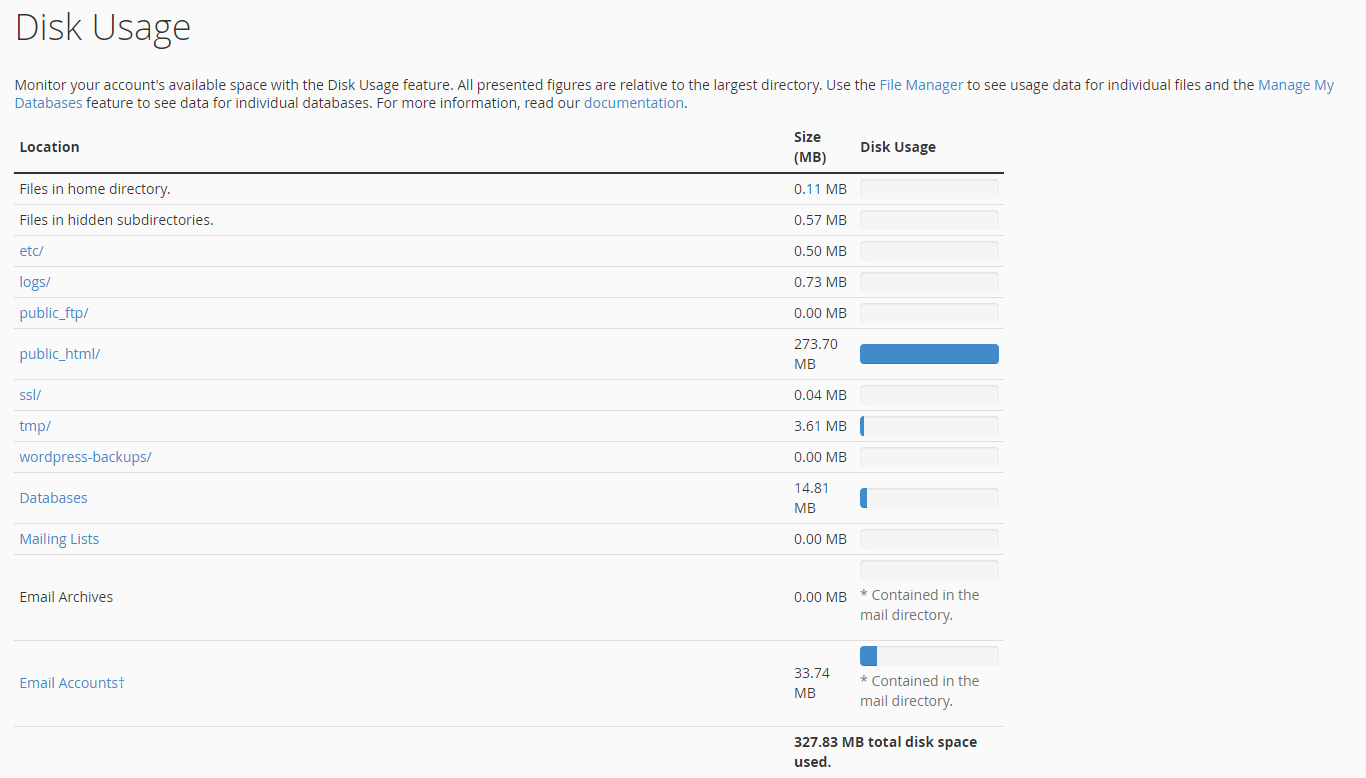Measuring and reducing disk usage in cPanel
Alright, fellow website owners, let’s talk about something that’s often overlooked but crucial: disk usage in cPanel. If your hosting account were a house, disk space would be the closet – it fills up fast, and if you don’t keep an eye on it, things can get messy. So, let’s roll up our sleeves and dive into measuring and reducing disk usage in cPanel.
Step 1: Check Your Disk Usage
First things first, you need to see what’s hogging all that space. Think of this as checking your closet to see if it's full of old clothes or just an excessive number of shoes.
1 - Log into cPanel : Open your web browser, type in your cPanel URL (usually something like yourdomain.com/cpanel), and enter your username and password.
2. Find Disk Usage : Once you’re in, scroll down to the **“Files”** section and click on **“Disk Usage”**. Here, you’ll see a nifty overview of what’s taking up space.

3. Detailed Breakdown : Click on **“Show More”** to get a detailed breakdown. This will show you which directories are the biggest culprits. Spoiler alert: it’s usually those forgotten backups or email attachments.

Step 2: Identify the Space Hogs
Now that you know where the problem areas are, it’s time to declutter. Think of it as spring cleaning – but for your hosting account.
1. **Backups**: Do you really need ten versions of that backup? Probably not. Keep the latest one or two and delete the rest. Navigate to the **“Backup”** section in cPanel, and get rid of the old ones.
2. **Emails**: Emails with large attachments can gobble up space faster than you can say “unsubscribe.” Head over to **“Email Accounts”**, check the storage usage for each account, and clean up the inboxes with heavy attachments.
3. **Logs**: Log files can accumulate over time. Go to **“Raw Access”** or **“Errors”** under the **“Metrics”** section and download and delete old log files you no longer need.
4. **Files**: Head back to **“File Manager”**. Here, you can delete unused files, old website backups, or even those photos you uploaded for that one blog post and never used.
Step 3: Reduce Disk Usage
Now, let’s talk about reducing future disk usage. You don’t want to clean out your closet just to fill it back up, right?
1. **Optimize Images**: Use tools like TinyPNG or WP Smush if you’re running a WordPress site. Compressed images take up less space and load faster, making everyone happy.
2. **Database Cleanup**: If your site uses a database, over time, it can get cluttered with unnecessary data. Use cPanel’s **“phpMyAdmin”** to optimize your databases. Just a few clicks, and you’ll free up space.
3. **Automate Backups**: Set up automated backups to an offsite location like Google Drive or Dropbox. This keeps your backups safe and off your hosting account.
4. **Regular Maintenance**: Schedule a monthly checkup to review and clean up disk usage. It’s like brushing your teeth – regular maintenance prevents bigger problems down the line.
Wrapping It Up
And there you have it! Measuring and reducing disk usage in cPanel isn’t rocket science – it’s more like tidying up your digital closet. By keeping an eye on what’s taking up space and regularly cleaning up, you can ensure your website runs smoothly and efficiently. Plus, your hosting provider will love you for it.
So, next time you log into cPanel, don’t just check your email or update your site. Take a few minutes to tidy up your disk usage. Your future self will thank you, and you’ll avoid that dreaded “disk quota exceeded” email. Happy cleaning!
